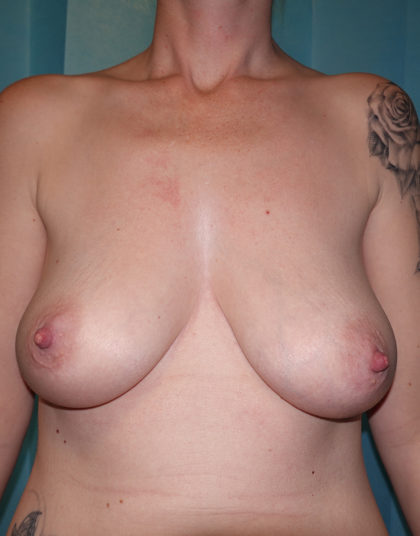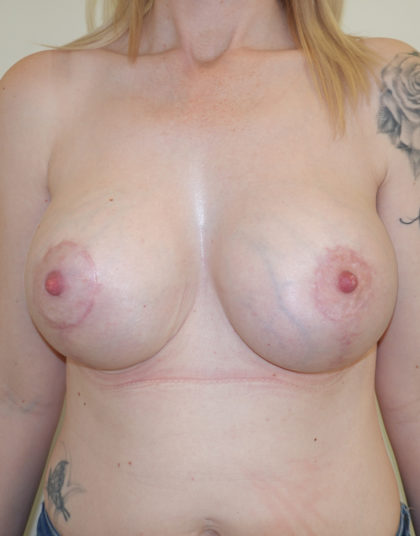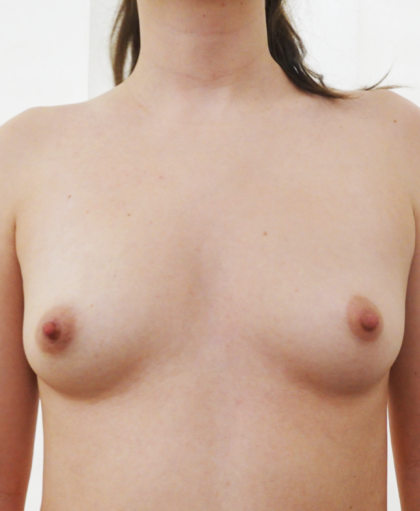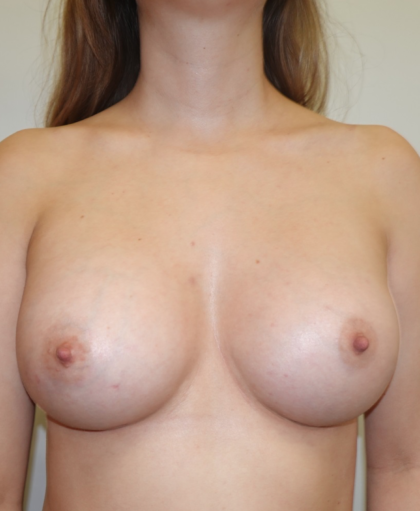Tuberous Breast Correction
Conveniently located to serve the areas of London and Manchester
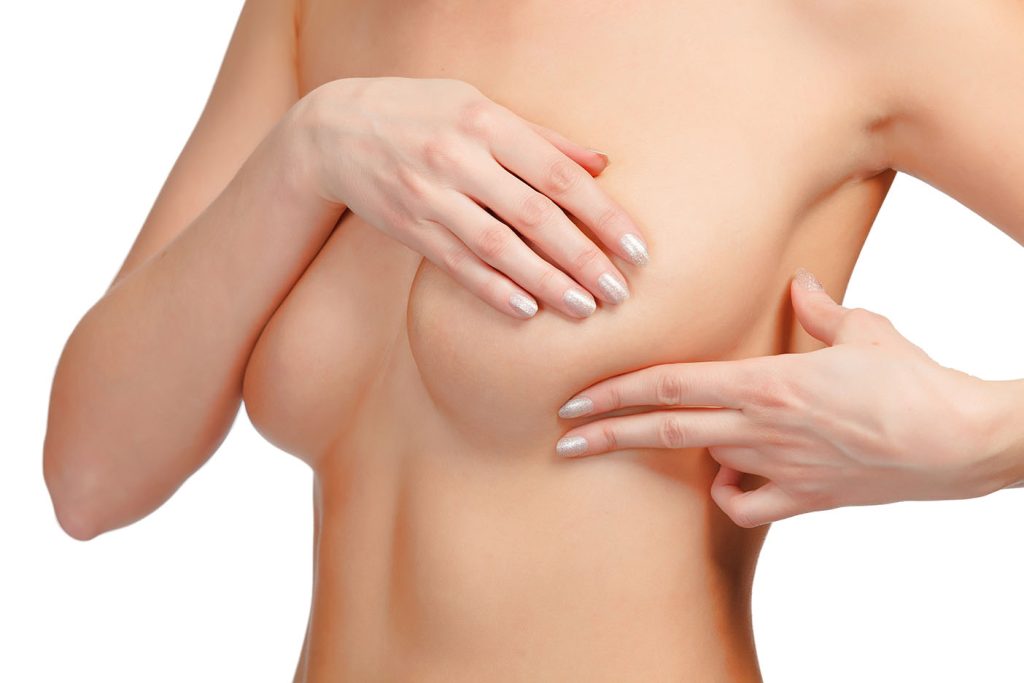
Tuberous breasts are deformed breasts that did develop proper fullness or roundness. The condition, also called breast hypoplasia, is defined by a lack of breast tissue, enlarged areolas, lack of symmetry, and a pointed, “tubular” shape. Although tuberous breasts do not pose a health risk, many women who have them find them unattractive. If you have this condition, a surgical correction can recreate the shape and size of normal, voluptuous breasts.
Here at Harley Surgery, Dr. Riccardo Frati’s implemented talent and skills have left many patients extremely satisfied with their results. As an internationally recognized cosmetic surgeon who was trained by master surgeons like Prof. Marco Gasparotti, Dr. Frati prioritizes patient safety as well as thoroughly understanding their aesthetic concerns. To find out more about Dr. Frati’s wide range of services, call our locations in London or Manchester at +44 16 1327 2139. We also offer the option to fill out our online contact form.
Before and After Photos
Contents
About Tuberous Breasts
While the cause of tuberous breasts is unknown, most doctors believe that it is a congenital condition– meaning that it is a genetic abnormality or a developmental issue during pregnancy. The condition itself doesn’t present itself until puberty. Throughout the years, doctors have made several theories.
One theory proposes that the connective tissue layer in the breast, the superficial fascia, lies abnormally under the skin and over the muscle. When the breast develops, it protrudes outward which causes the nipple to expand and a lack of tissue development at the base. Another theory suggests that this appearance is due to a type of tissue constriction at the base itself. (1)
As stated before, they don’t pose a medical risk, but many women want the cosmetic appeal of fuller breasts.
How are Tuberous Breasts Corrected?
Tuberous breasts can be restored to a natural size and shape through natural breast augmentation or breast implants. Depending on the severity of your breast hypoplasia, one method may produce better results than the other. Both types of breast augmentation are offered by Dr. Frati, so he can discuss the benefits of each during your personal consultation.
Procedure Steps
Natural Breast Augmentation
Natural breast augmentation, also called breast fat grafting, is a form of relocating your own body’s fat to your breasts through liposuction techniques. First, he will choose a donor site that has an unwanted amount of fat. Usually, this is somewhere in the midsection, back, or flanks. After he administers local anaesthesia and sedation, he will make small incisions at the donor site. These incisions are incredibly small and do not require sutures post-surgery.
Then, a substance called tumescent fluid is injected into the donor area with an instrument called a cannula. The fluid contains lidocaine for numbing and epinephrine to prevent blood loss. The use of tumescent fluid has been the standard for liposuction procedures; it’s able to safely and effectively separate fat from surrounding tissues. (2) Next, Dr. Frati will use the cannula to suction out fat cells. Once an adequate amount of fat is extracted, it is placed in a centrifuge for purification. He will make incisions in the breasts so that the fat can be placed within the tissue. Once the fat is successfully transferred, he will cover all incisions with gauze and surgical tape. Although this method is completely natural, one downside is that it may only increase your breasts by one cup size.
Breast Implants
Patients enjoy that there is a wide variety of breast implant options to consider. Women with breast hypoplasia can find the right kind of implant that conforms to their chest perfectly. Dr. Frati offers only the very best in breast implants, Mentor implants. These implants can be made of saline or silicone, textured or smooth, and round or teardrop shaped. Since breast hypoplasia is a more complex issue, he can go over the best options for your individual situation.
While some women may have to undergo this procedure under general anaesthesia, others may qualify for local anaesthesia with sedation. To place the implant, he will only make one of three incisions: a periareolar, inframmamory, or an transaxillary incision. All of these work to reduce the risk of leaving a lasting, visible scar.
A periareolar incision is made around the areola, an inframmamory incision is made on the underside of each breast, and transaxillary incisions are made in the armpits. The breast implants are then placed under the pectoral muscle (subpectoral) or over it (prepectoral). For some women, a subpectoral placement will works better for her individual anatomy, while others will benefit from a prepectoral placement. Both options have been shown to yield excellent results as long as pre-operative decisions are made well. (3)
You and Dr. Frati will work together to choose the technique that will allow for the easiest recovery and the best results. To navigate the complexities of tuberous breasts, he may also make other adjustments such as relocation of the nipples and asymmetry corrections. In some cases he may recommend a breast uplift in addition to one natural breast augmention or breast implants.
Preparation
Regardless of the type of breast augmentation you opt for, the preparation process is the same. Dr. Frati may require some blood tests or adjustments to your medications. Certain anti-inflammatories, vitamins and pain relievers are also blood thinners that may increase your risk of excessive bleeding during the procedure. If you smoke, you should quit at least 4-6 weeks before your surgery. Nicotine is known to constrict to your blood vessels and impede with proper healing.
Finally, you should plan on taking at least one week off from work, pick up your recovery medications from the chemist before your procedure date, and be sure to fast the night before.
Recovery
Most of the time, breast augmentation is an outpatient procedure, so you will get to go home on the same day of the procedure. Since the effects of anaesthesia can last up to 24 hours, you will have to arrange for a family member or friend to drive you home. We recommend that you have someone assist you with making meals and chores for the first few days.
During the first week, you should primarily rest but also get up and walk from time to time. Light activity will promote healthy blood flow needed for healing. If your work doesn’t involve intense physical exercise or heavy lifting, you will be able to return to work after one week.
Dr. Frati requires that all patients wear a compression bra for 2 to 4 weeks. This bra is designed to reduce swelling, protect all incisions, and prevent scarring. If you are a smoker, he will advise you to continue to avoid smoking for at least a couple of weeks. After about 4 to 8 weeks, you will be able to resume your normal workout routine, but every individual case is different.
Candidates
While breast augmentation procedures are designed to accommodate all kinds of patients, the ideal candidate is:
- Willing to stop smoking for a period of time
- A non-smoker
- At a stable and healthy weight
- Able to follow aftercare instructions
- Not pregnant or planning to be
- Unhappy with the asymmetry, volume or shape of their breasts.
- Realistic about their expectations
Personal Consultation
A personal consultation with Dr. Frati will clear up your all questions and concerns you may have about breast augmentation. His dedication to informing patients of every detail of their procedure help contribute to longterm satisfaction. We also have a blog that explains the details of various treatments that Dr. Frati offers.
To get a more individualized experience, call us at London locations at +44 20 3633 2619 or +44 16 1327 2139 for our office in Manchester. You can also schedule a consultation or ask a question with our online form, and we will get back to you soon.
Cost of Tuberous Breast Correction in London
Every case of tuberous breasts is unique; Dr. Frati will only be able to determine the cost of your procedure after a personal consultation. There, he will be able to discuss the benefits, risks, and variations of both natural breast augmentation and breast implants.
References
- Aggarwal S, Niranjan NS. Tuberous breast deformity: A modified technique for single-stage correction. Indian Journal of Plastic Surgery. 2016;49(02):166-171. doi:https://doi.org/10.4103/0970-0358.191293
- Halk AB, Habbema L, Genders RE, Hanke CW. Safety Studies in the Field of Liposuction: A Systematic Review. Dermatologic Surgery. 2019;45(2):171-182. doi:https://doi.org/10.1097/dss.0000000000001707
- Salibian AA, Frey JD, Karp NS. Strategies and considerations in selecting between subpectoral and prepectoral breast reconstruction. Gland Surg. 2019;8(1):11-18. doi:10.21037/gs.2018.08.01











